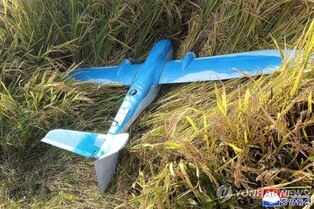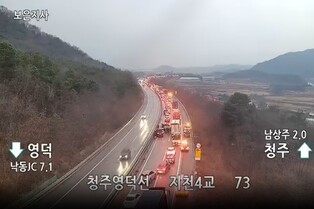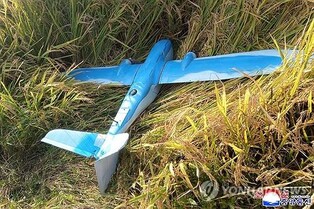*Editor’s note: K-VIBE invites experts from various K-culture sectors to share their extraordinary discovery about the Korean culture.
Choi Man-soon's Medicinal K-Food: 'The Taste of Soy Sauce is More Important Than the Pot'
By Choi Man-soon, Food Columnist and Director of the Korea Traditional Medicine Food Research Institute
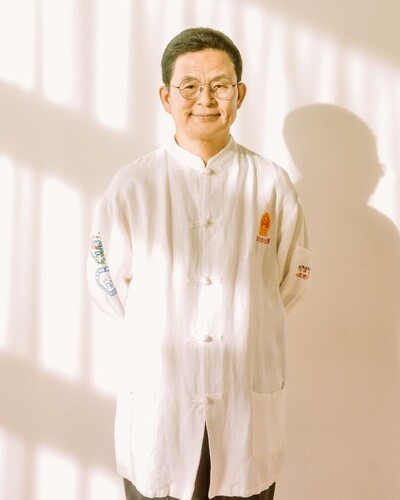
Jang (醬) is a fundamental seasoning that determines the taste of food in Korean cuisine. Traditionally, when referring to seasonings, it encompasses soy sauce, doenjang (soybean paste), gochujang (chili paste), and cheonggukjang (fermented soybean paste).
Soy sauce, made by fermenting soybeans, stimulates digestive enzymes and helps the digestion process, facilitating the breakdown and absorption of food.
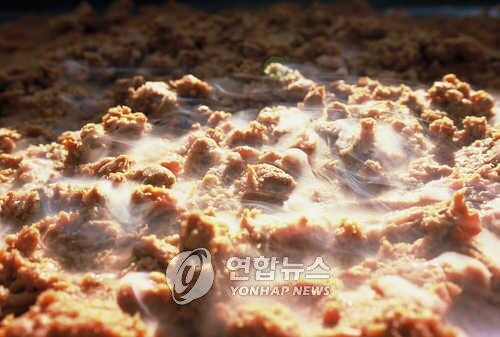 |
| ▲ Fermenting Doenjang (Yonhap) |
Soy sauce is rich in antioxidants such as polyphenols and flavonoids, which can prevent cellular oxidative damage and slow down the aging process. The organic acids and natural antibacterial substances in soy sauce help inhibit the growth of pathogens, detoxify vegetable toxins, and prevent infections.
Doenjang is rich in protein, vitamins, and minerals. It contains a significant amount of B vitamins and iron, and the probiotics in doenjang increase beneficial gut bacteria, improving intestinal health and strengthening immunity.
The components in doenjang, such as isoflavones and saponins, can help inhibit the growth of cancer cells. The unsaturated fatty acids and lecithin in doenjang can lower blood cholesterol levels and reduce the risk of cardiovascular diseases.
In this way, both soy sauce and doenjang are seasonings that provide numerous health benefits. On December 3rd of this year, UNESCO added Korea's traditional jang-making culture to the Intangible Cultural Heritage of Humanity.
'Jang-making' refers to the traditional process of making doenjang and soy sauce by fermenting soybeans to create meju (fermented soybean blocks). Particularly, the process of creating two types of jang—doenjang and soy sauce—after fermenting meju, and adding new soy sauce to the leftover soy sauce from the previous year, is a unique aspect of our culture.
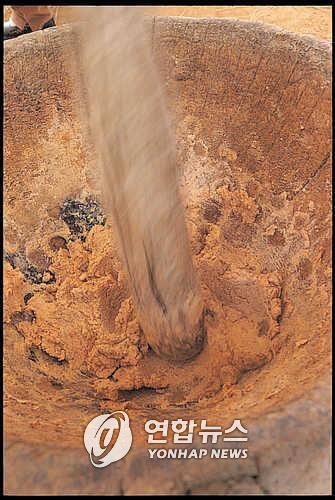 |
| ▲ Beans are strength (力). As an excellent source of protein, beans have long been part of a nutritional balance with rice, barley, and other grains. The photo shows the fermentation process of doenjang and cheonggukjang made from beans. (Yonhap) |
◇ The Strategy Required for Making Jang
When comparing the traditional process of making jang (fermented soybean products) with the "Art of War" by Sun Tzu, there is a common theme: understanding the environment, preparing carefully, and considering the results.
Traditional jang is like a tonic, completed through long periods of waiting and meticulous management. Similarly, Sun Tzu emphasizes that the deployment of troops and their movements are crucial elements that determine the outcome of a battle, requiring careful planning and strategy.
In choosing the terrain, Sun Tzu advises, "Occupy high ground and areas that receive plenty of sunlight." If the military occupies a favorable environment, their chances of victory increase.
The choice of the environment for fermenting meju (fermented soybean blocks) is also a fundamental process in determining the taste of jang. To make traditional jang, a space with good ventilation, proper humidity, and the right temperature is essential.
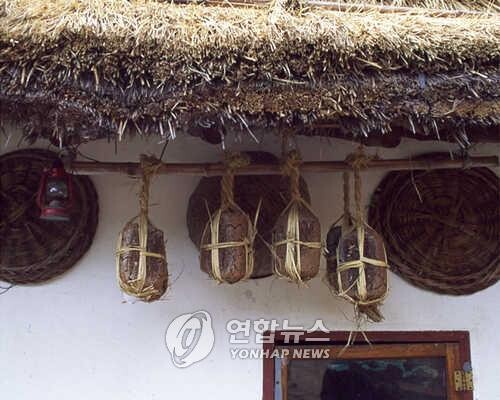 |
| ▲ Meju hanging from the eaves. (Yonhap) |
If the wrong terrain (environment) is chosen, the jang may spoil or fail to ferment properly. Just as sunlight, wind, and humidity control are crucial for deepening the flavor of jang, the military must occupy an appropriate position to secure victory.
Sun Tzu states, "Carefully analyze the enemy’s condition to avoid traps." Comparing this to the fermentation of jang, the flavor of the jang deepens when the fermentation process is monitored regularly.
If there is excessive foam or a strong odor, it indicates a problem with the fermentation. If the color becomes too dark, it is over-fermented, and if the smell becomes unpleasant, it has spoiled. In other words, paying attention to the condition of the jang is essential for producing good flavor.
Sun Tzu also says, "The movement of the army must be cautious; rushing can lead to traps." In comparison to the aging process of jang, both doenjang and soy sauce require long periods of aging to develop rich flavors.
If the jang is removed too early, it will lack depth of flavor. If left for too long, the fermentation may go too far and alter the taste. Similarly, if the army moves too quickly, it becomes fatigued, and if it hesitates for too long, it loses opportunities.
Therefore, good flavor in jang comes from proper aging, and good tactics arise from careful judgment. In conclusion, comparing Sun Tzu's "Art of War" and the effects of jang, traditional jang is not just food, but a natural remedy that prevents illness and maintains health.
As Sun Tzu emphasized in the battlefield, the morale of the troops depends on the health of the soldiers, and good food ultimately leads to victory. This aligns with the benefits of jang, which also sustains health.
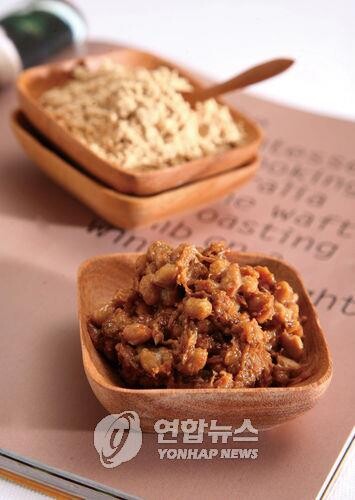 |
| ▲ Cheonggukjang. The genistein produced during the fermentation process has much greater cancer-preventing effects than regular genistein, making it more beneficial to consume beans fermented rather than raw for cancer prevention. (Yonhap) |
◇ The True Meaning of Jang Flavor in Food Literature
Historically, for Koreans, fermented condiments like soy sauce and doenjang (soybean paste) were vital food resources that supported the dietary needs of a household throughout the year. The Gyuhap Chongseo (閨閤叢書) emphasizes the importance of jang (fermented condiments), stating, "If the flavor of jang is poor, even the most exquisite and delicious side dishes will be hard to digest. How could jang not be precious?"
Additionally, the Imwon Gyeongjeji (林園經濟志) compares the role of jang to that of a general, saying, "Jang is the general who can control the poison in food, just as a commander can subdue a violent person." In the Bokhae Tonggo (博海通攷), jang is likened to a 'general of various flavors.'
Our ancestors took jang very seriously. If the flavor of jang in a household was poor, no matter how good the meat side dishes were, it would be difficult to set the table properly. Even in rural areas, having a variety of good jang meant there was less concern about side dishes, so those in charge of the household were encouraged to pay close attention to jang.
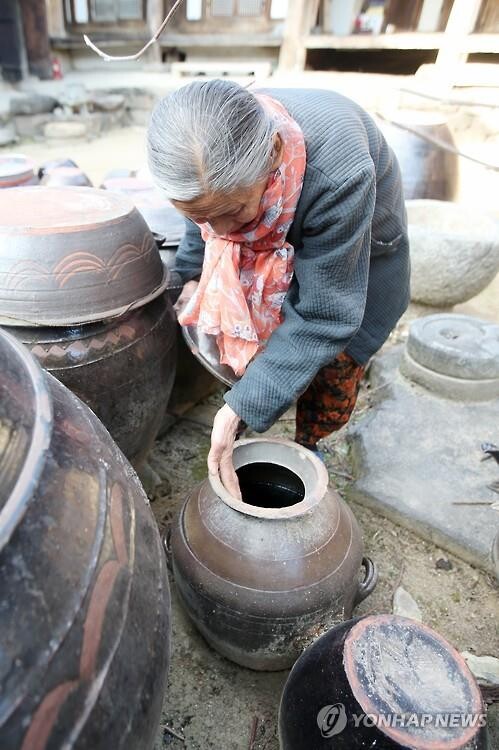 |
| ▲ In Gure, Jeollanam-do, Lee Gil-sun (83, female), the 9th-generation head of the family, inspects a soy sauce jar estimated to be over 230 years old at the Omi-ri Unjoru traditional house on January 13, 2017. (Yonhap) |
During the Joseon Dynasty, jang was held in high regard, and every year, a good date was chosen to make it with great care. The earthenware jars used for storing jang were cleaned daily, and the area around the jang jars was kept spotless, showing no neglect in its storage.
The day chosen for making jang was generally considered best on the last day of January (the day of the Horse in the lunar calendar).
Just as the choice of an auspicious day was important, selecting the water for making jang was also crucial. The Gyuhap Chongseo states, "Only the best water should be used for making jang if you want it to taste good."
Soy sauce and doenjang are the foundation of K-Food. They provide umami and depth of flavor, enhance gut health and immunity, and help create a healthy diet through natural seasoning.
On YouTube, there is an abundance of content featuring Western dishes using soy sauce and doenjang. Today, soy sauce and doenjang can be applied to every cuisine around the world. What makes this even more impressive is that they not only contribute to health but also enhance flavor—this is the "finishing touch" of the dish.
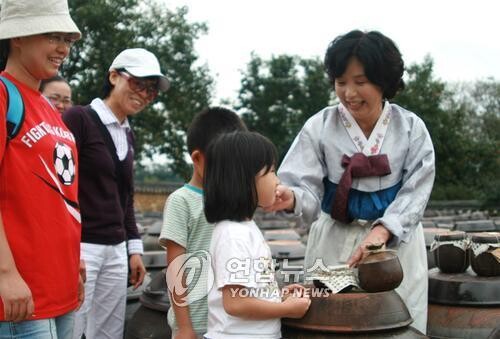 |
| ▲ Kim Jeong-ok (far R), 21st-generation head of the family of the Bo-seong Seon clan from Haegari, Jang-an-myeon, Boeun-gun, Chungcheongbuk-do, who garnered attention for preserving a 350-year-old seed soy sauce jar, shows tourists the doenjang and gochujang made by boiling dates on October 3, 2007. (Yonhap) |
(C) Yonhap News Agency. All Rights Reserved



















